Topic outline
-
-
-
Work is done when a force acts on a moving body. Work is done whenever a force moves something.
- Work is done whenever a force is used to make something move.
- Work is done when there is movement against an opposing force.
- Doing work requires energy or is a transfer of energy
- As you do this work, energy is transferred.
- Work done = Energy Transferred
Everyday examples of work include walking upstairs, lifting heavy objects, playing tug of war and pushing a shopping trolley.
Whenever work is done, energy is transferred from one place to another. The total amount of energy remains constant.
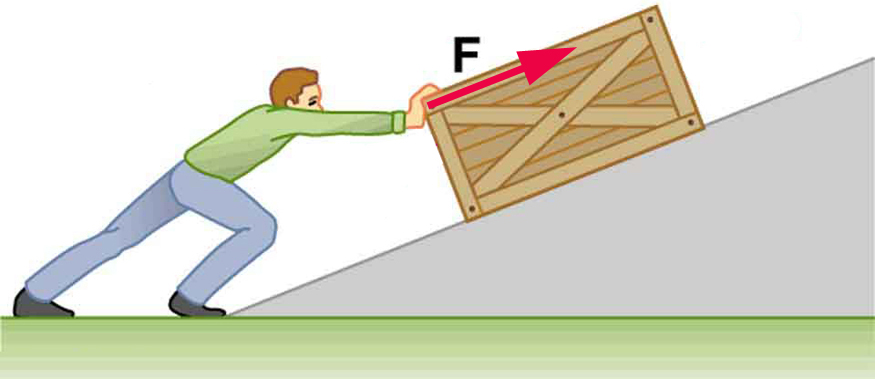
Figure 1: A man pushing a box up a ramp.
The S.I unit of the work is joule.
1 joule work is defined as the amount of work done to cover a distance of 1 m in the direction of force when the force of 1N is applied on the body.
Work is done against two forces
1. Work against the gravity.
2. Work against friction.
Here is the equation that relates to work done, force applied, and distance moved in the direction of the force.
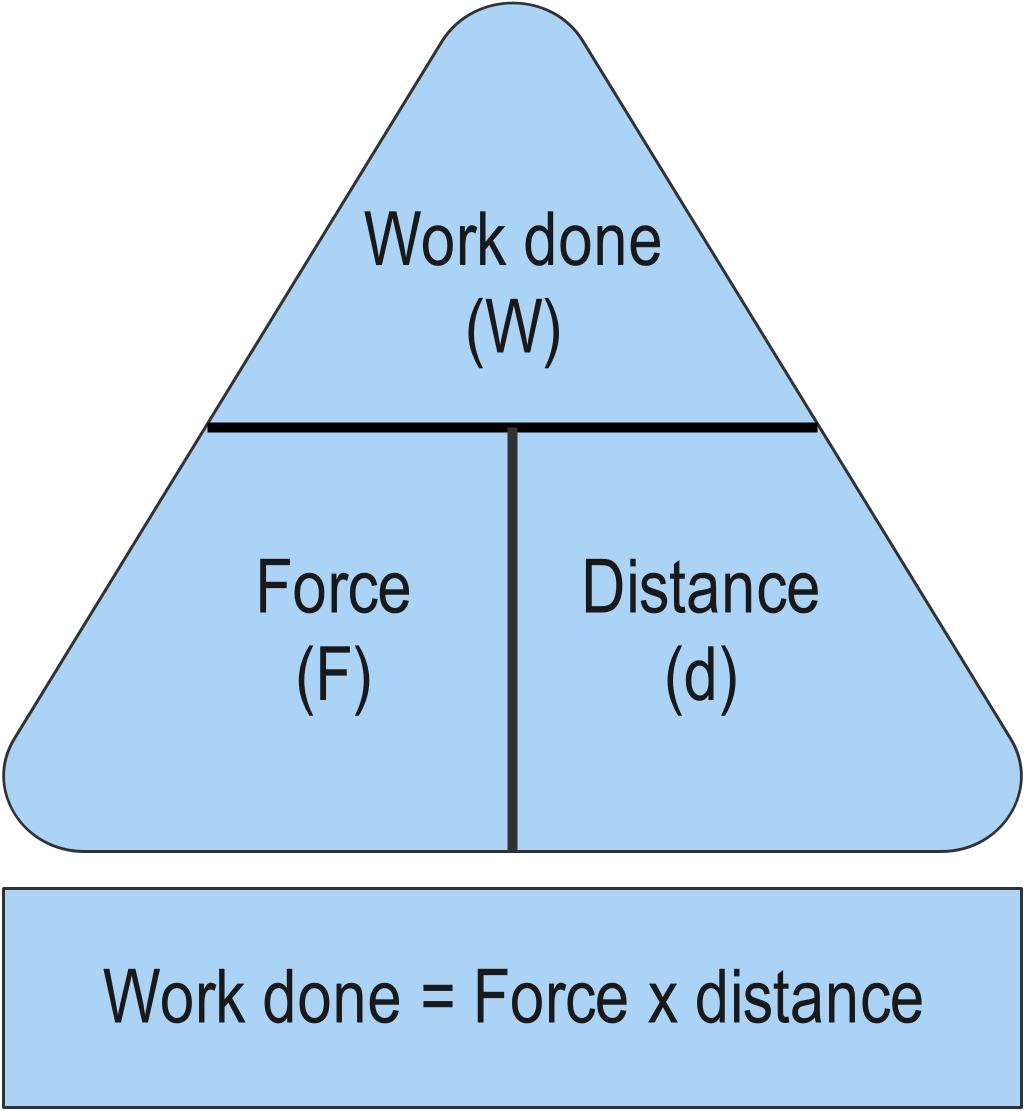
where:
W is measured in joules, J
F is measured in newtons, N
d is measured in metres, m

Figure 2: In the example above, 10 N is applied to move the box 2 m. In this example the work done is against friction.
Work done = 10 × 2 = 20 J
Work done has the same units as energy - joules. This is because energy is the ability to do work. You must have energy to do work. In the example above, a person could not push the suitcase (and so do work) without energy. Work done is equal to energy transferred, ie work = energy transferred.
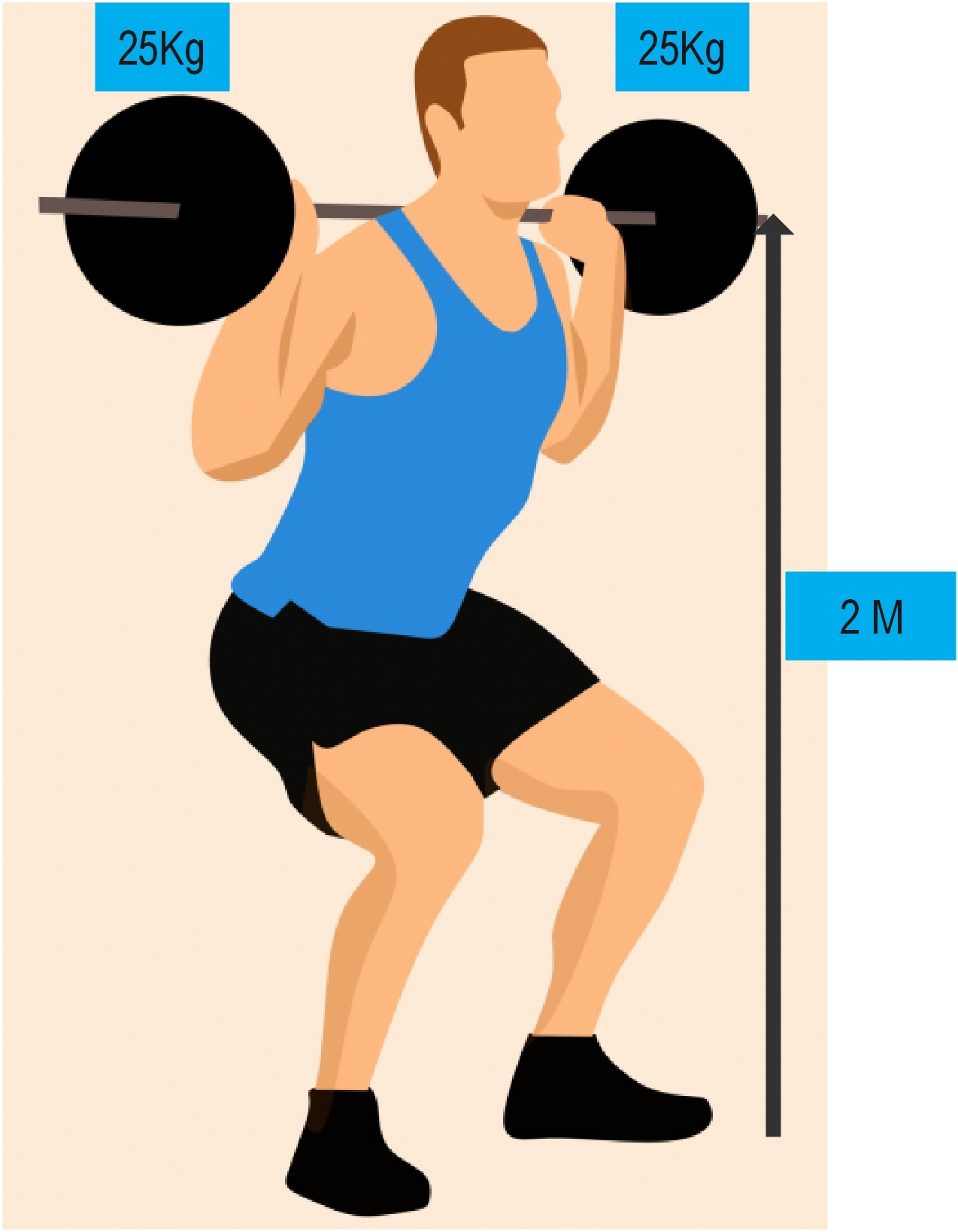
Figure 3: A weightlifter lifts a barbell weighing 50 kg and displaces it from the ground by 2 m. Here, the work done upon the barbell is against gravity
W= F x D
W= 50 x 2 = 100 J
A man lifts a box with a mass of 5 kg from the floor to a shelf 2 m high. How much work is done?
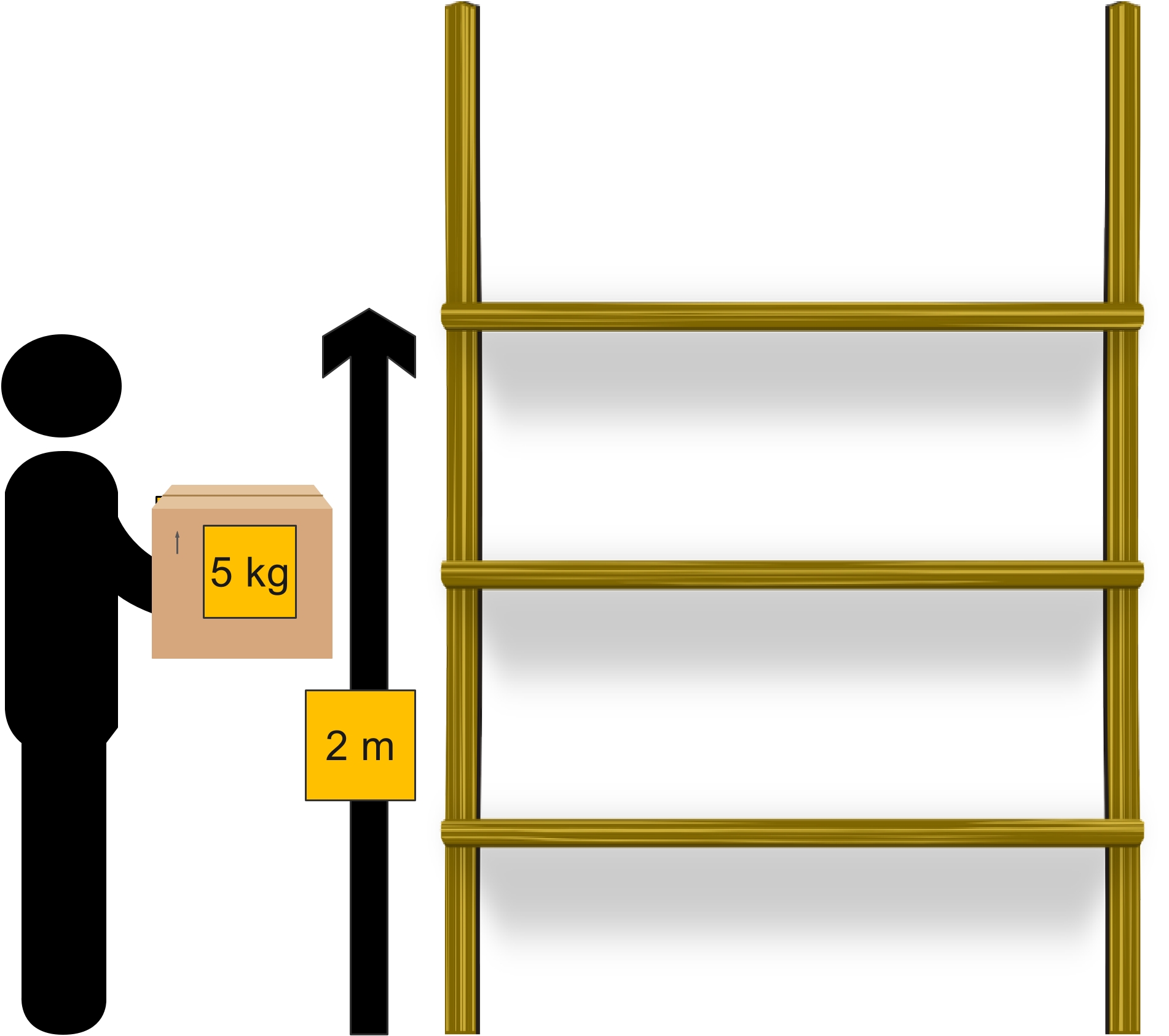
Figure 4: A man lifting a box
The opposing force in this example is the weight of the brick. On earth a mass of 1 kg is equal to 10 newtons (10 N). So, the weight of the brick is 50 N.
Work done (J) = force (N) x distance moved (m)
50 N x 2 m = 100 j
-
-
-
Energy is the ability to do work. The amount of work done tells us how much energy has been transferred from one form to another.
Energy can be described as in different 'stores'. It cannot be created or destroyed but it can be transferred, dissipated, or stored in different ways.
Energy can be stored or transferred but it cannot be used up. For example, energy is stored in the chemical bonds of molecules in diesel oil and oxygen molecules in the air. This energy is transferred in combustion and allows the car to move and accelerate.
Where there are energy transfers in a system, the total energy associated with the system stays the same. Energy is measured in joules (J).
Types of energy
Forms of energy are simply different types of energy such as heat, light, sound, kinetic and chemical. Energy resources are stores of a particular type of energy.
Examples of energy resources include sunlight, wind, waves, coal, and oil. Chemical energy is a type of energy. Coal is an example of an energy resource of (or store of) chemical energy.
Energy forms
The main forms of energy are:
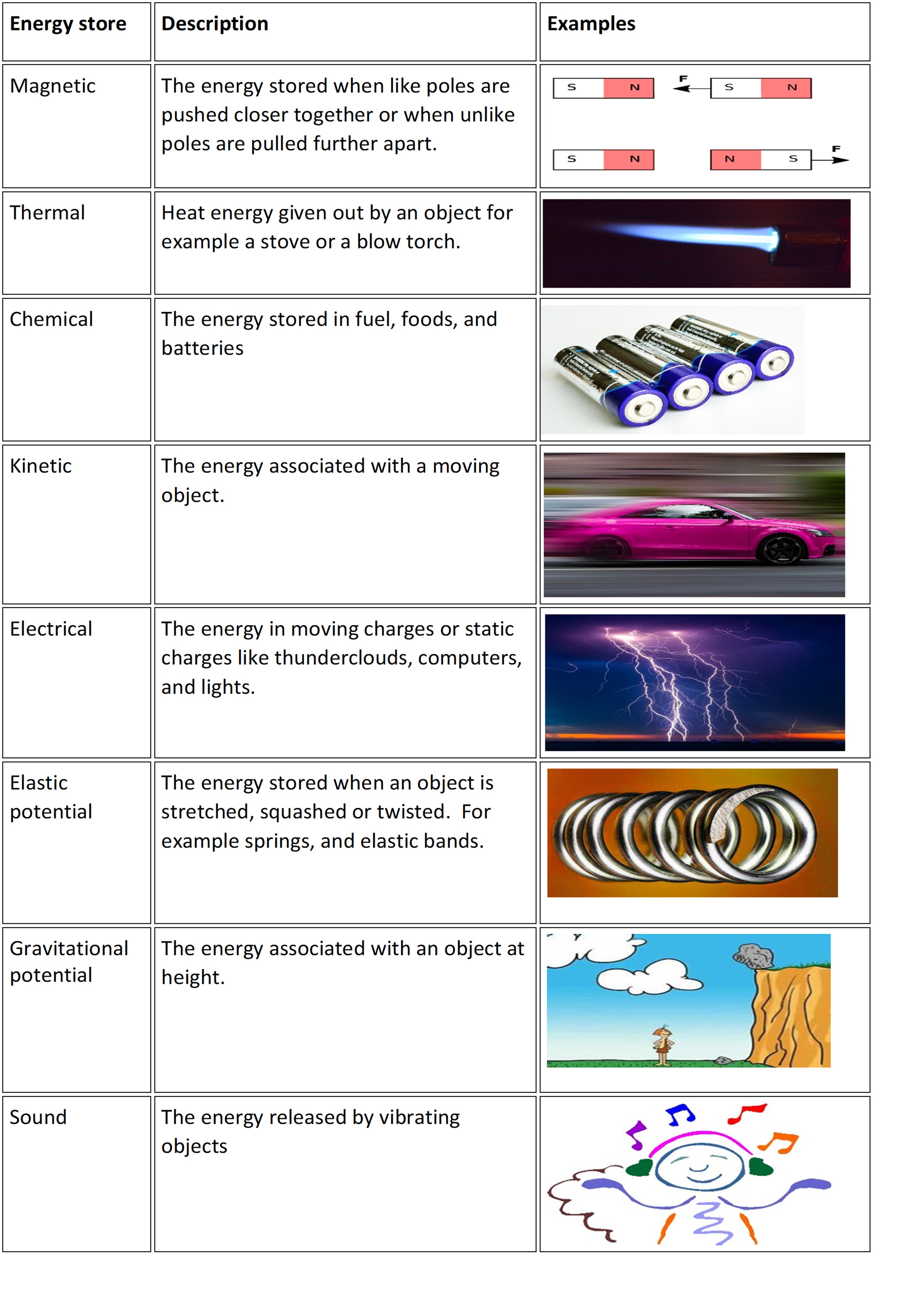
-
-
-
Potential energy as a form of energy that results from the alteration of its position or state. In other words, potential energy is energy that is stored, or not yet used.
In the case of a bow and an arrow, when the bow is drawn, it stores an amount of energy, which is responsible for the kinetic energy it gains when the arrow is released.
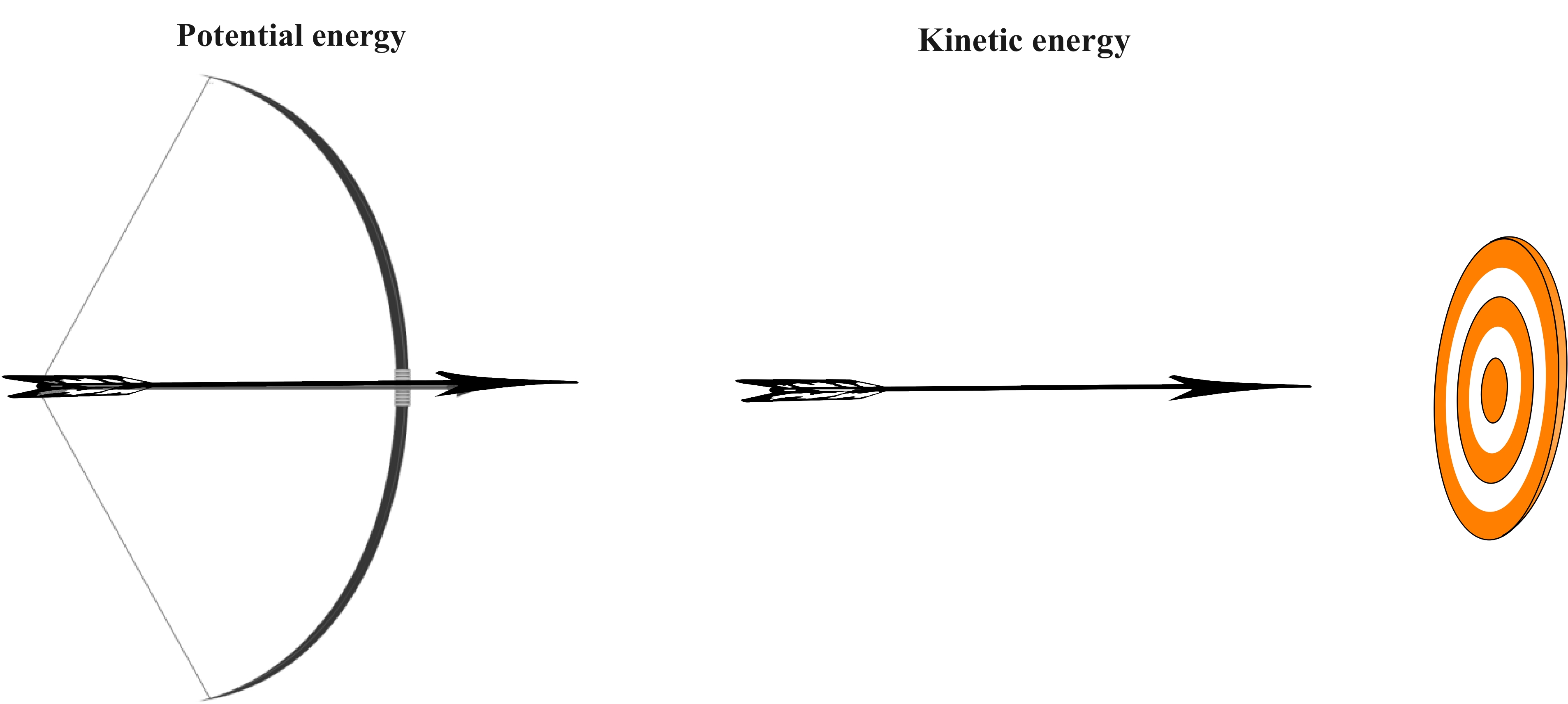
Similarly, in the case of a spring, when it is stretched from its original position, it gains energy which we observe in the form of stress we feel in our hands when we stretch it.
An object hanging off the edge of a table has potential energy.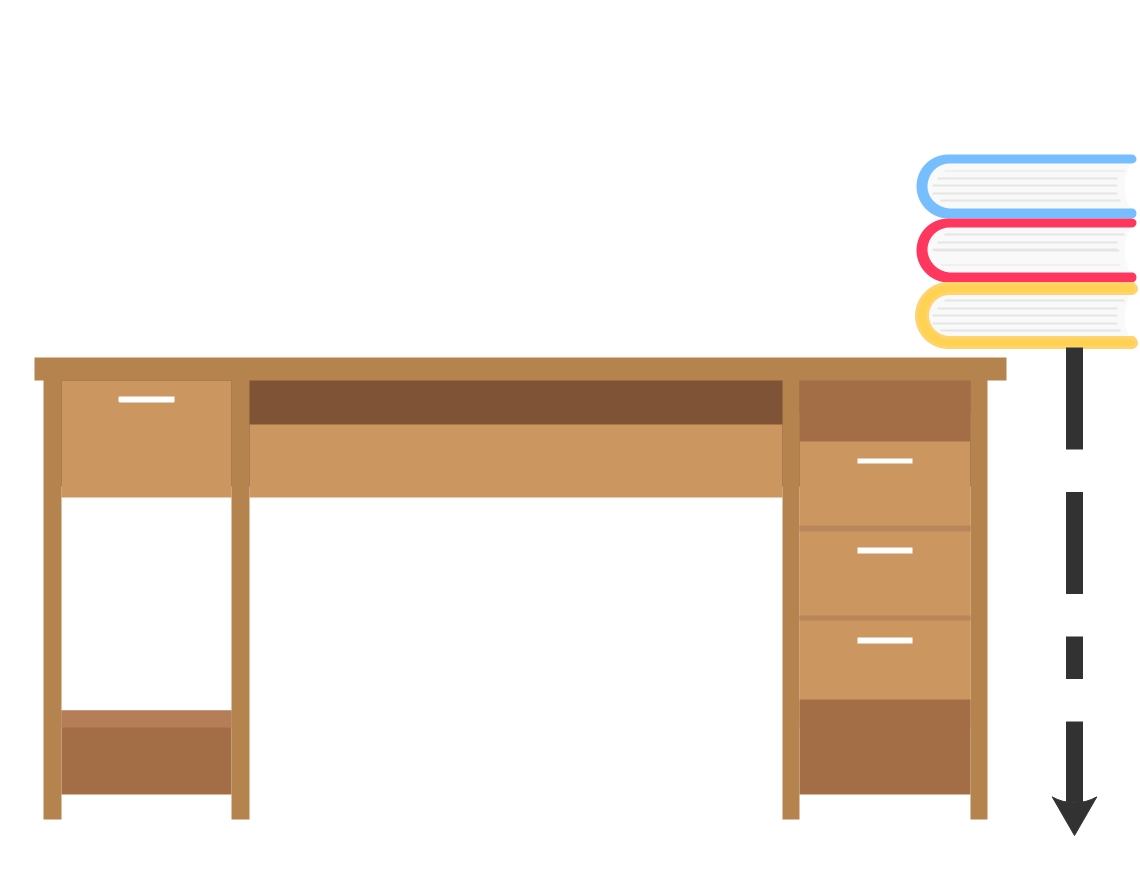
Figure 2: The books have potential energy. This will be converted into kinetic energy if they fall to the ground.Types of Potential Energy
Potential energy is one of the two main forms of energy. There are two main types of potential energy, and they are:
Gravitational Potential Energy
The gravitational potential energy of an object is defined as the energy possessed by an object that rose to a certain height against gravity. So, in figure 2, the books have gravitational potential energy because they are at height on the table.
Elastic Potential Energy
Elastic potential energy is stored in objects that can be compressed or stretched, such as rubber bands, trampolines, and bungee cords. The more an object can stretch, the more potential energy it has. Many objects are specifically designed to store elastic potential energy, such as the following:
- A twisted rubber band that powers a toy plane
- An archer’s stretched bow
An object that stores elastic potential energy will typically have a high elastic limit. When deformed beyond the elastic limit, the object will no longer return to its original shape.
When an object which has gravitational potential energy or elastic potential energy, it can be converted into kinetic energy. Remember that kinetic energy is the form of energy an object has when it is moving.
-
-
-
As previously mentioned, energy cannot be created or destroyed, it is transformed into other forms of energy.
Energy transformation can be defined as: the processes where energy is converted from one form into another.
For example, when a torch is switched on, the chemical energy in the batteries is transformed into heat and light energy.
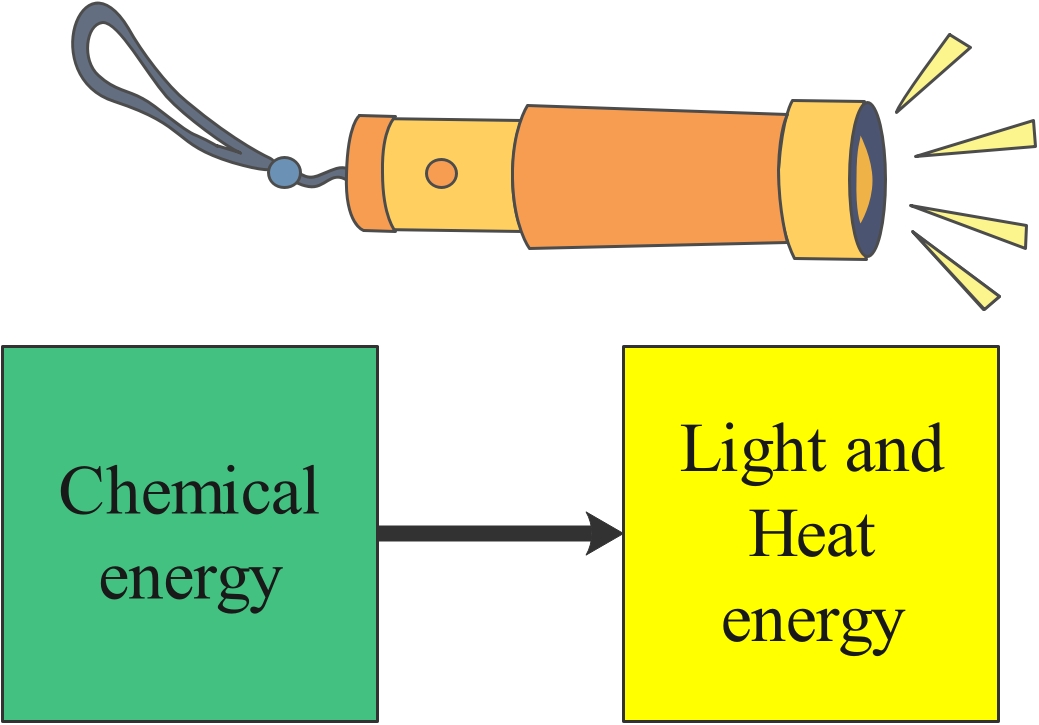
Figure 1: The energy transformed when a torch is switched on.
When a vacuum cleaner is used, electrical energy is transformed into mechanical energy. Vacuum cleaners are very noisy, and the motor will get hot after a few minutes of use. Sound and heat energy are wasted.
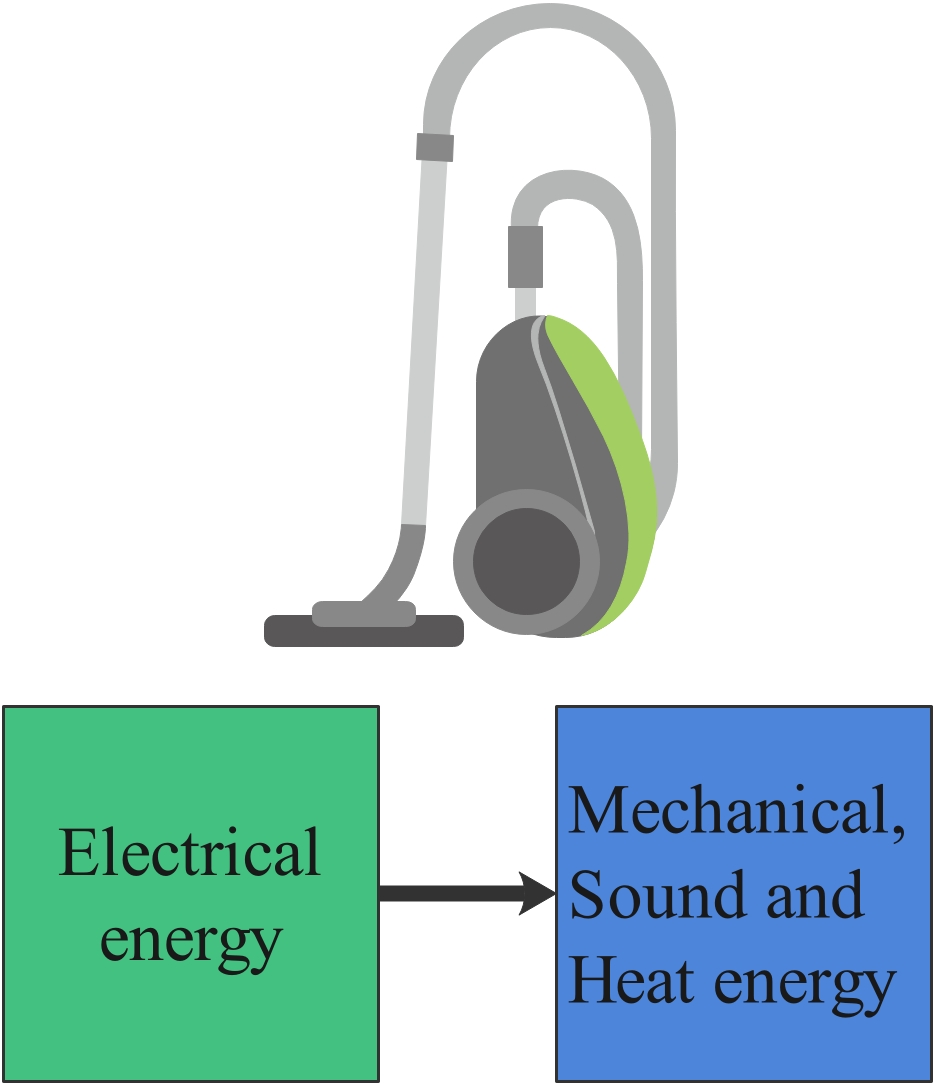
Figure 2: The energy transfer in a vacuum cleaner.
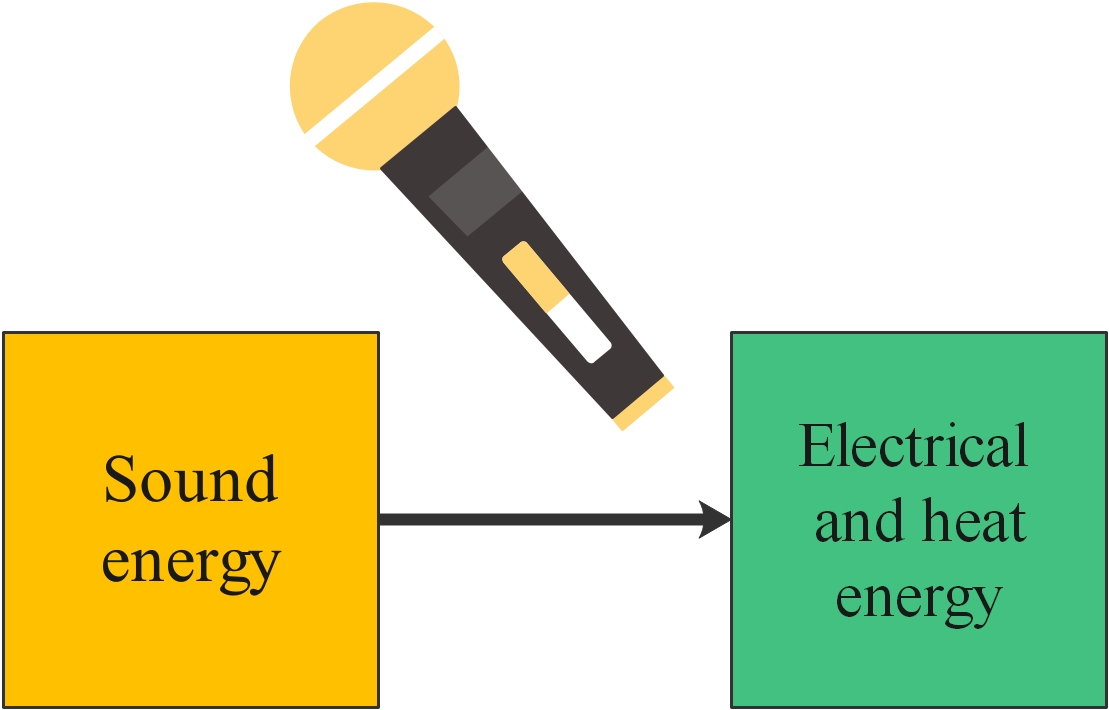
Figure 3: A microphone does not transform electrical energy into sound energy as you may have thought. It's the other way round!
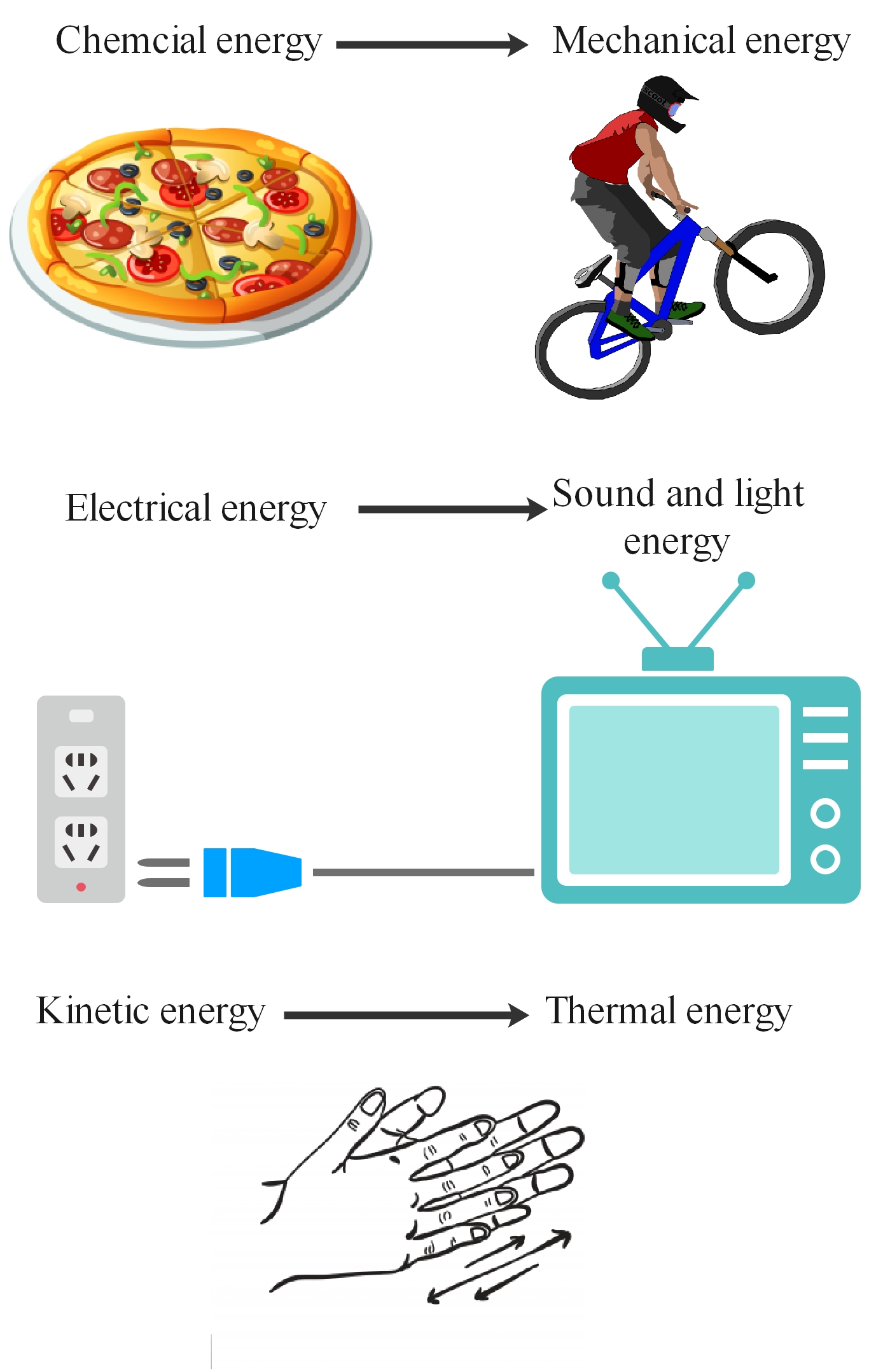
Figure 4: Some further examples of energy transformation.
When you make a phone call, several energy transformations take place:
- Chemical energy stored in the battery is converted into electrical energy.
- The sound energy in your voice makes the air vibrate. Vibrating air carries the sound energy into the phone.
- The diaphragm in the mouthpiece microphone converts sound energy into electrical energy.
- The electrical energy travels from the phone, via exchanges, to your friend's phone.
- A diaphragm in the earpiece loudspeaker of your friend's phone converts the incoming electrical energy back to sound energy.
- The sound energy travels out from the earpiece into your friend's ear.
- Some of the electrical energy is also converted into heat and light energy.
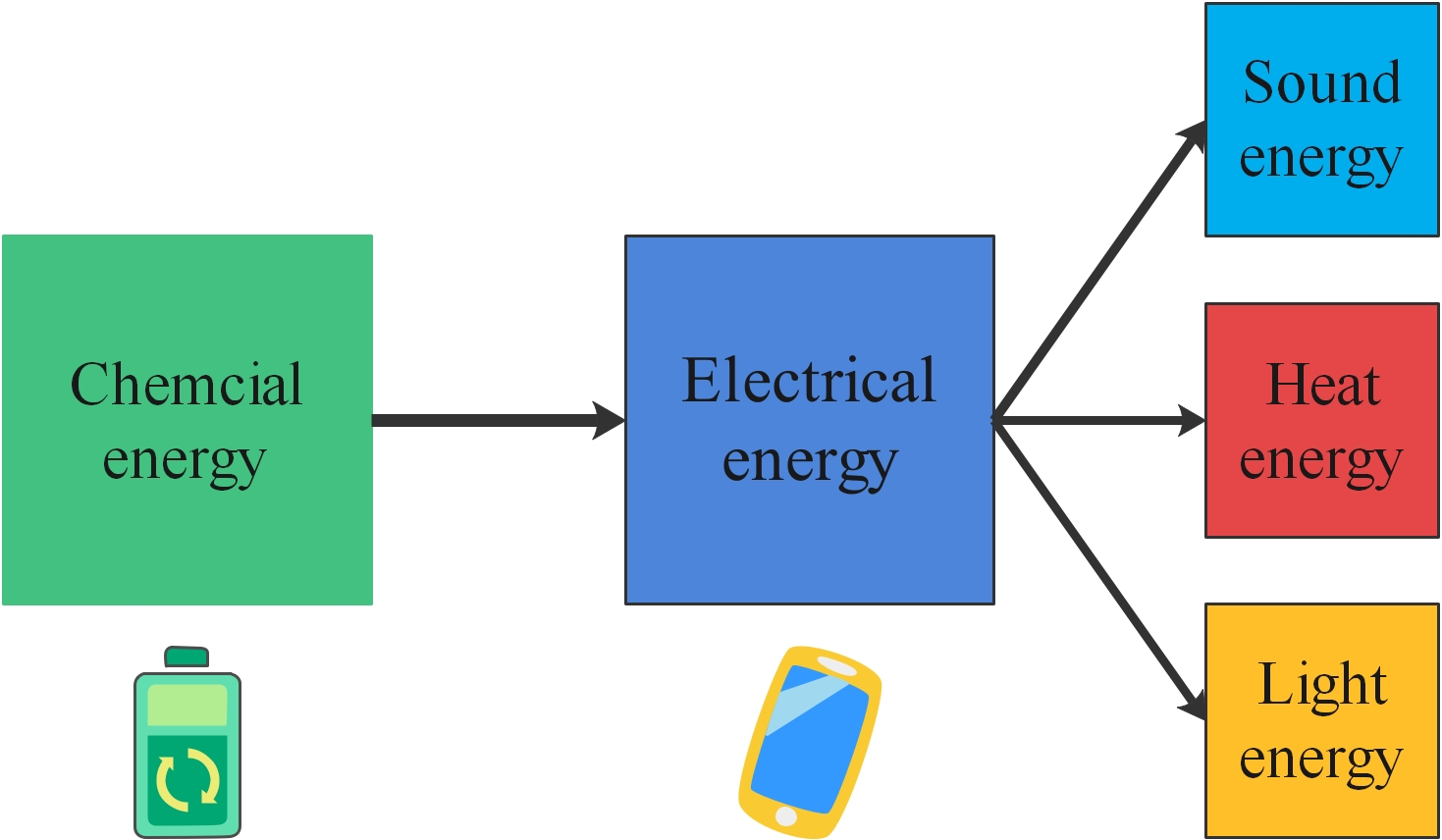
Figure 4: the energy transformation in a telephone.
-
-
-
The law of conservation of energy states that energy can neither be created nor be destroyed. Although, it may be transformed from one form to another.
All the forms of energy follow the law of conservation of energy.
In brief, the law of conservation of energy states that: In a closed system, i.e., a system that is isolated from its surroundings, the total energy of the system is conserved.
Energy can be transferred usefully, stored or dissipated, but it cannot be created or destroyed.
In all cases, energy comes from one store and is transferred to another store. This means that all the energy in the Universe was present at the Big Bang and will still be around at the very end of time.
No system is perfect. Whenever there is a change in a system, energy is transformed and some of that energy is dissipated.
Dissipation is a term that is often used to describe ways in which energy is wasted. Any energy that is not transferred to useful energy stores is said to be wasted because it is transferred to the surroundings.
If all energy were conserved, a motor vehicle would never have to fill up with fuel again. However, when you drive a car, lots of the chemical energy from the fuel is wasted. This is because:
- The wheels have to work hard to overcome friction between the tyres and the road. This causes the tyres to become hot and the thermal energy is wasted.
- The chemical energy from the fuel is converted into mechanical energy in the engine. There are many moving parts in the engine which must overcome the force of friction. This creates heat energy which is wasted.
- Engines also produce sound energy, which is wasted.
When a skydiver jumps out of a plane, he begins to lose gravitational potential energy as his height decreases and he gains kinetic energy as his speed increases.
However, not all of the gravitational potential energy is transferred into kinetic energy as some work is done pushing against the air particles. Some of the gravitational potential energy is transferred to the air particles and this is waster energy.
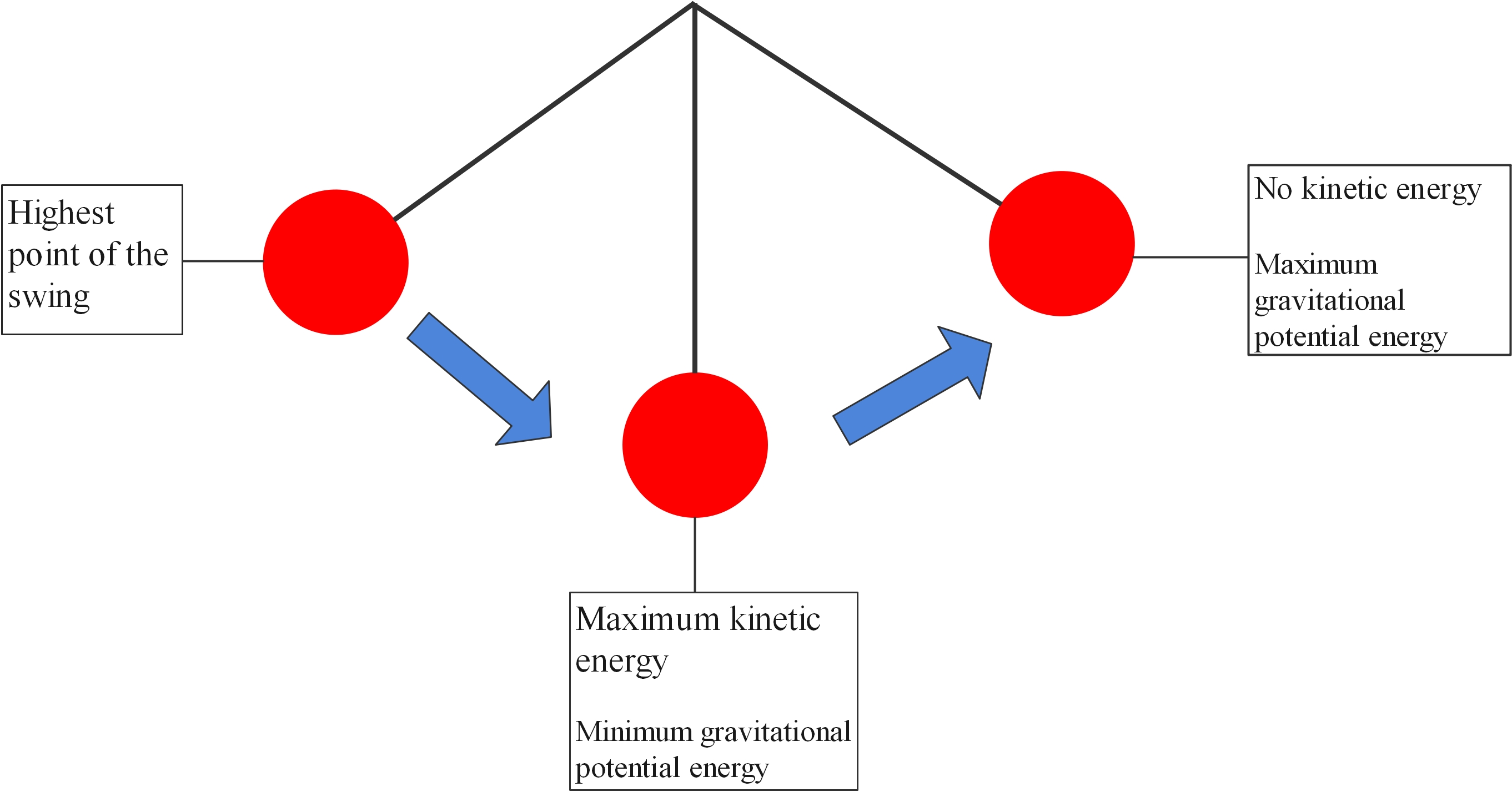
Figure 1: When a pendulum swings to and fro, its energy is constantly changing from potential energy to kinetic energy and back again. This energy is gradually transferred to heat by friction with the air.
If the amount of energy going into a system is known you can draw a Sankey diagram. These diagrams are particularly useful in showing how much energy is in the system, transformed and into what type(s) of energy. Sankey diagrams start off as one arrow that splits into two or more points. The width of the arrow is drawn to scale to show the amount of energy.
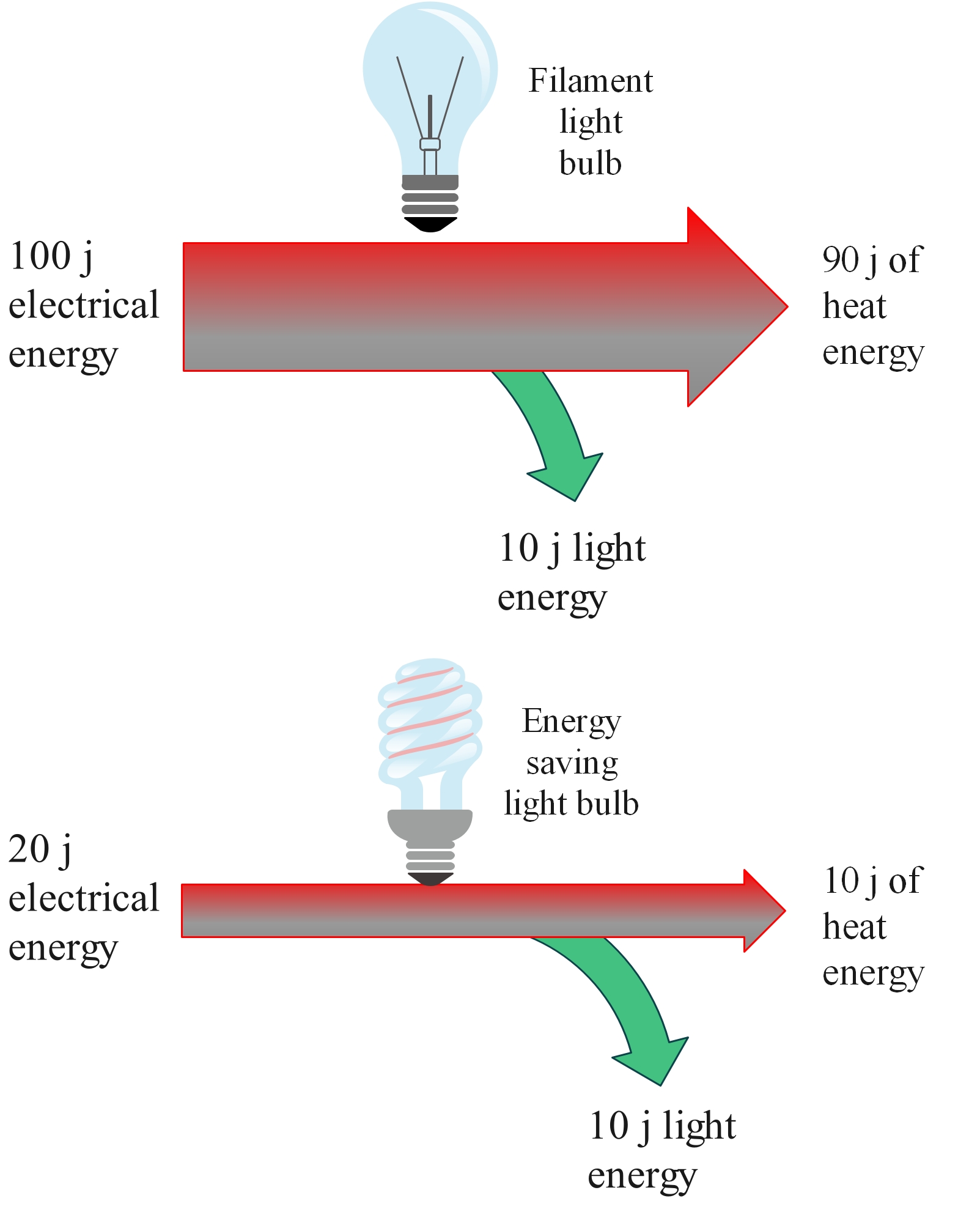
Figure 2: Sankey diagrams comparing the energy needed, used, and wasted in two different types of light bulbs.
Looking at the examples in figure 1, do you notice that the energy at the start and the energy transformed is equal to each other? Remember that all energy is conserved.
-
-
-
Mechanical energy is the sum of kinetic energy and potential energy in an object that is used to do a particular work. In other words, it describes the energy of an object because of its motion or position, or both.
Mechanical energy enables that object to apply a force to another object in order to cause it to be displaced.
There are two main types of mechanical energy.
1. Potential Energy: It is the energy stored in an object due to its position. Gravitational potential energy due to Earth’s gravity is a common type of potential energy. It depends on the object’s height from the Earth’s surface. For example, an apple in an apple tree has the maximum potential energy. When it falls, its potential energy reduces and becomes zero upon reaching the surface.
2. Kinetic Energy: It is the energy possessed by an object due to its motion. The movement of an object is manifested by its speed. Consider the above example. When the apple is in the tree, it is at rest with zero kinetic energy. When it falls, it gains speed owing to acceleration due to gravity. The kinetic energy increases and reaches a maximum when the apple hits the ground.
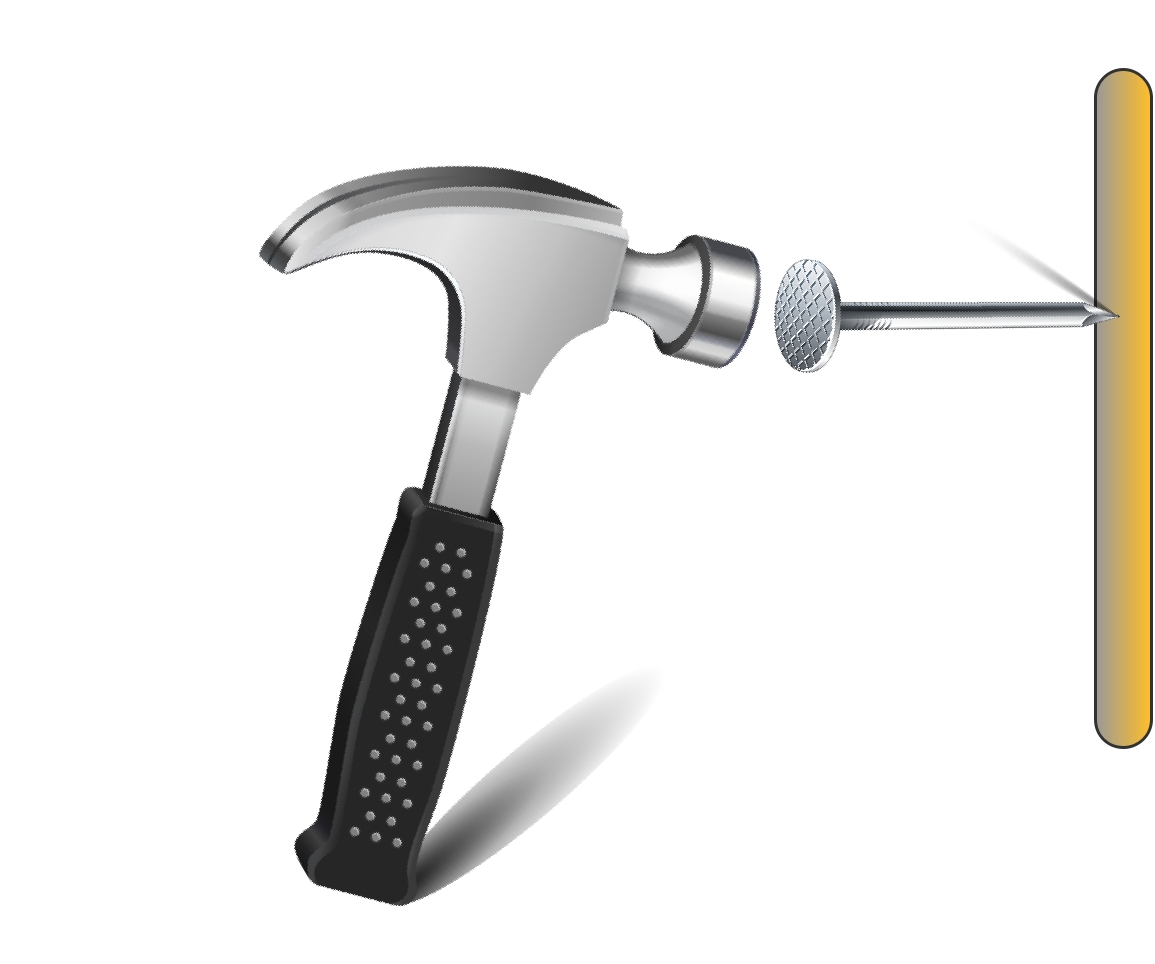
A hammer is a tool that uses mechanical energy to do work. The mechanical energy of a hammer gives the hammer its ability to apply a force to a nail in order to cause it to be displaced. Because the hammer has mechanical energy, in the form of kinetic energy, it can do work on the nail.

When you kick a soccer ball your leg applies kinetic energy to the ball. When you kick a soccer ball the ball deforms for an instant. The energy going into the collision is the energy of your foot added to stored energy in the ball. The energy coming out mechanical energy which causes the ball to move.
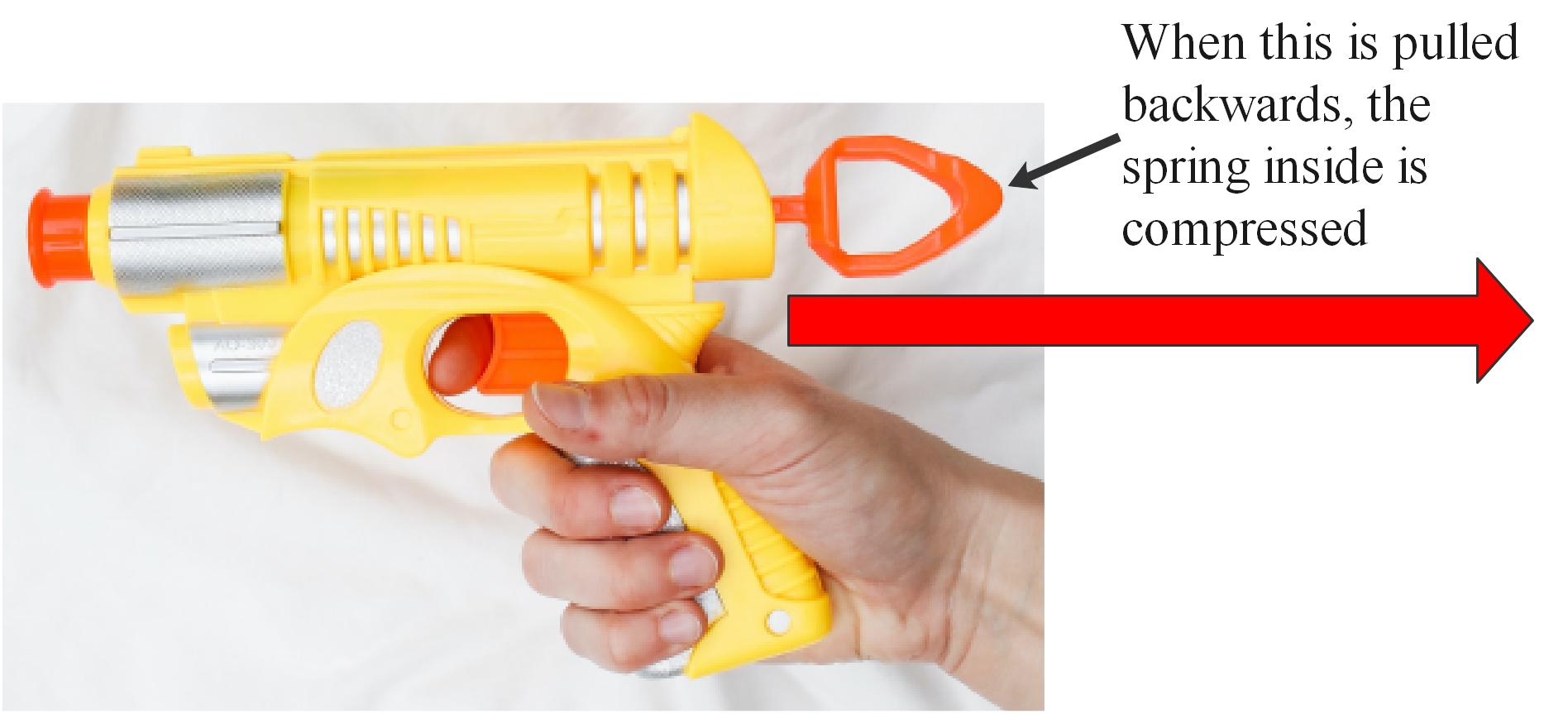
When a dart gun is loaded and the springs are compressed, it possesses mechanical energy. The mechanical energy of the compressed springs gives the springs the ability to apply a force to the dart out of the gun when the trigger is pulled. The springs have mechanical energy in the form of elastic potential energy.
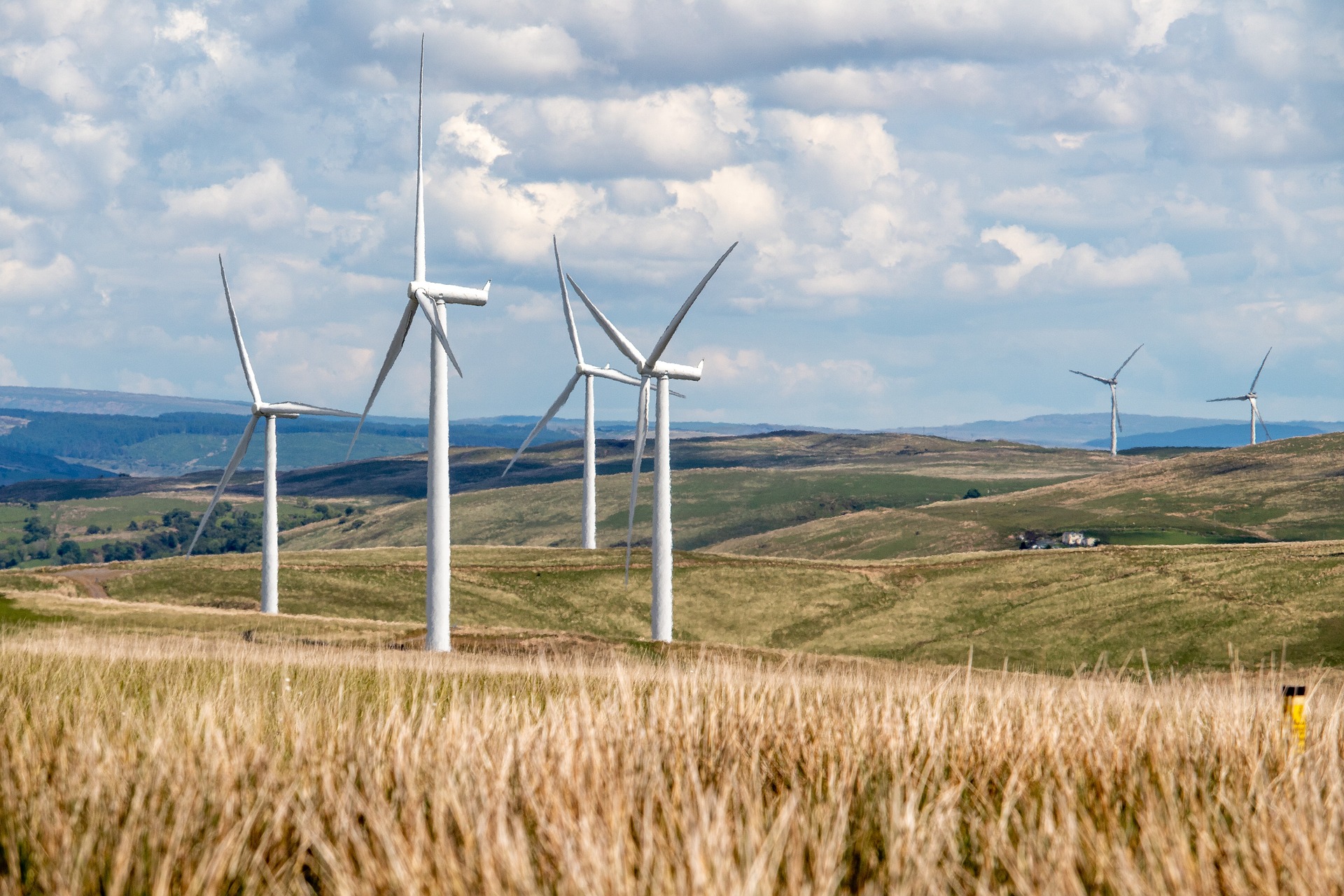
At a wind farm, winds are used to do work on the blades of a turbine. The mechanical energy of the moving air gives the air particles the ability to apply a force and cause movement of the blades. As the blades spin, their kinetic energy is converted into electrical energy which is a non-mechanical form of energy and supplied to homes and industries to run electrical appliances. Because the moving wind has mechanical energy in the form of kinetic energy, it can do work on the blades.
-
-
-
The rate at which energy is transferred is called power and the amount of energy that is usefully transferred is called efficiency.
When work is done on an object, energy is transferred. The rate at which this energy is transferred is called power. So, the more powerful a device is, the more energy it will transfer each second.
We can define power as the rate of doing work, it is the work done in unit time.
Work done is measured in joules, the time taken in seconds and so power is measured in joules per seconds or watts (W).
1 joule per second = 1 W
The SI unit of power is Watt (W).
The power of very powerful engines is measured in kilowatts (kW) or megawatts (mW).
1 kW = 1 kilowatt = 1000 watts
1 mW = 1 megawatt = 1 000 000 watts
Sometimes the power of motor vehicles and other machines is given in terms of horsepower (hp), which is equal to 750 watts.
The equation used to calculate the power is:
Most machines are designed and built to do work on objects. All machines are typically described by a power rating. The power rating indicates the rate at which that machine can do work upon other objects. So, the power of a machine is the work/time ratio for that machine.
As a simple example, burning one kilogram of coal releases much more energy than detonating a kilogram of TNT, but because the TNT reaction releases energy much more quickly, it delivers far more power than the coal.
A car engine is an example of a machine that is given a power rating. The power rating relates to how quickly the car can accelerate.
Suppose that a 40-hp engine could accelerate the car from 0 km/hr to 60 km/hr in 20 seconds. If this were the case, then a car with four times the horsepower could do the same amount of work in a quarter of the time. 160-hp engine could accelerate the same car from 0 km/hr to 60 km/hr in 5 seconds.
It makes sense that a more powerful engine can do the same amount of work in less time.

Figure 1: A Porsche 911 has 379 hp and can accelerate from 0 - 60 km/hr in 4.0 seconds.
A standard single-cab Toyota Hilux has 150 hp. It can carry a maximum load of 1 tonne.
A mining truck, such as the T282B, has 3,650 hp engine and a body capable of carrying approximately 400 tons. Its maximum speed is 68 km/hr.
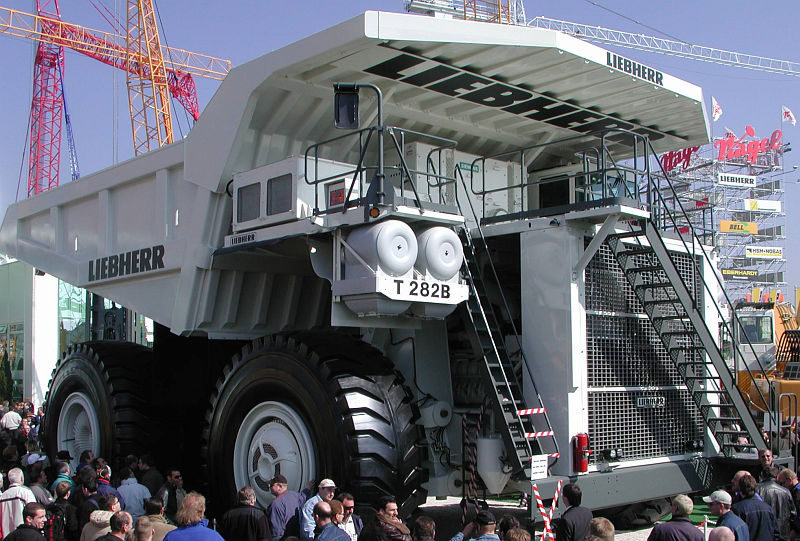
Figure 2: The T282B is the largest capacity mining dump truck in the world. It uses 227 liters of diesel per hour and has 4 m high tyres.
Which is more powerful? Which would be more useful to move material at a mine?
The mining truck. A Hilux could do the work, but it will take much longer because it is not powerful enough to carry large loads unlike the mining truck which can carry 400 tons in one load.
Personal power
A person is also a machine that has a power rating. Some people are more power-full than others. That is, some people can do the same amount of work in less time or more work in the same amount of time.
Two students, Emmanuel and Rheema, are lifting weights. Emmanuel lifts the 100 kg barbell over his head ten times in one minute: Rheema lifts the 100 kg barbell over his head ten times in ten seconds.
Which student does the most work?
Which student delivers the most power?
They do the same amount of work. They apply the same force to lift the same barbell the same distance above their heads. Yet, Rhemma is the most "power-full" since he does the same work in less time.
Activity 1
What you will need:
A flight of stairs
Stopwatch
Measuring tape
1. Measure your weight in newtons. (This is your mass in kilograms multiplied by 10 to convert it into newtons).
2. Measure the vertical height of the stairs. Since you are going to lift your body against the vertical force of gravity you will need to know the height.
3. Time how long it takes you from the bottom to the top of the stairs.
4. Repeat with other members of the class.
5. Calculate the work done and the power in your legs.
Remember the equations:
work done = force x distance moved
and
Power = work done/ time taken.
Who is the most powerful in your class?
-